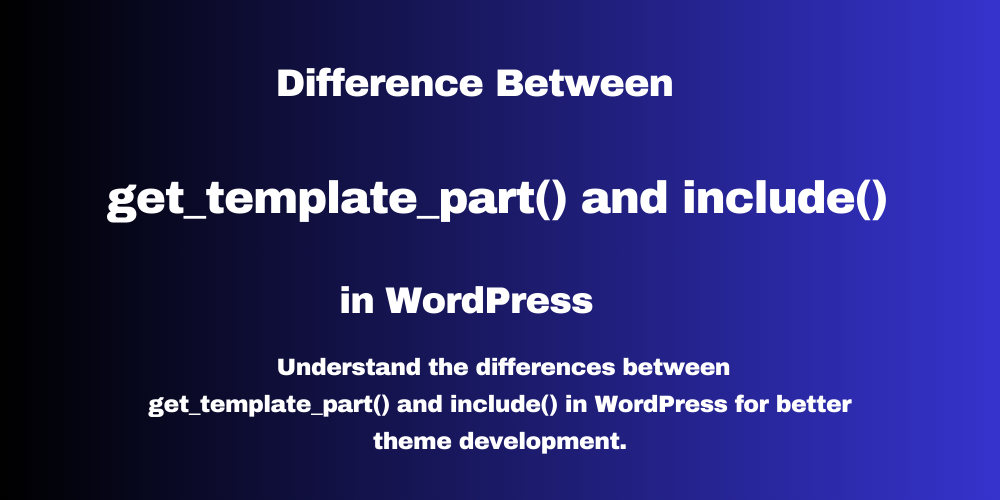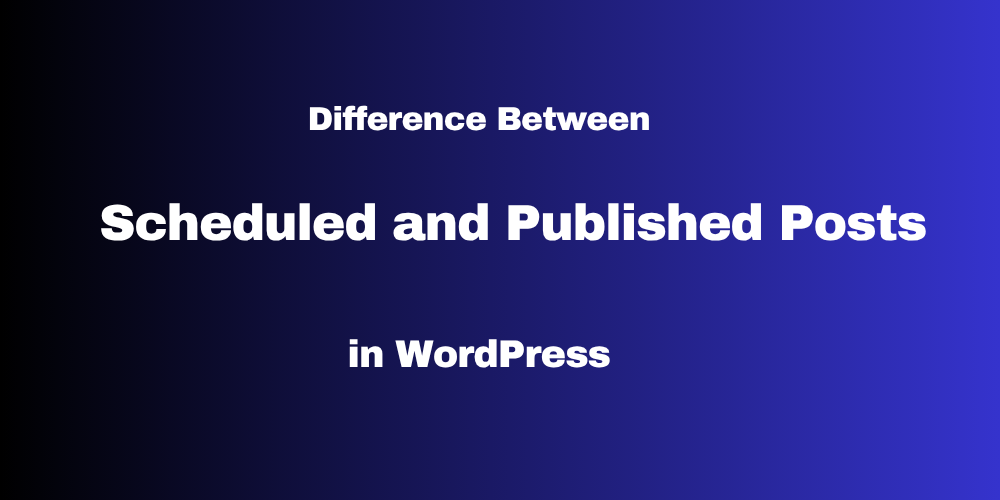Table of Contents Overview Ultimate Auction Pro Auctions Made Easy for WooCommerce Auctions for WooCommerce…
Difference Between get_template_part() and include() in WordPress

Table of Contents
- Introduction
- What is
get_template_part()? - What is
include()? - Key Differences Between
get_template_part()andinclude() - When to Use
get_template_part() - When to Use
include() - Conclusion
- FAQs
Introduction
When developing WordPress themes or plugins, you often need to include external files into your theme’s structure. In WordPress, two common methods to include files are get_template_part() and include(). Both have their purposes, but knowing when and why to use them can make your development process more efficient and organized. In this post, we’ll explore the difference between these two functions.
What is get_template_part()?
get_template_part() is a WordPress function that loads a template part from the theme directory. It’s primarily used for reusing template parts, like headers, footers, or any other piece of code that you want to load in multiple places in your theme. It follows WordPress’s best practices for theme development.
- Example Use Case:
get_template_part('content', 'single');loads a file namedcontent-single.phpfrom the theme folder.
get_template_part() helps maintain clean, modular code and ensures consistency throughout your theme.
What is include()?
include() is a native PHP function that includes and evaluates a specified file. It allows you to load files into your WordPress site but doesn’t adhere to WordPress conventions for modularity and theme structure.
- Example Use Case:
include('custom-file.php');loads a file from the same directory.
Unlike get_template_part(), include() doesn’t provide as much flexibility for reusing files across different template parts. It also doesn’t follow the theme development standards of WordPress.
Key Differences Between get_template_part() and include()
| Feature | get_template_part() | include() |
|---|---|---|
| WordPress Standard | Follows WordPress theme development standards. | PHP function, not specific to WordPress. |
| Flexibility | Supports loading specific template parts. | Loads any PHP file. |
| Reusability | Encourages code reuse and modularity. | Less suitable for reusing template parts. |
| Path Resolution | Resolves paths relative to the theme directory. | Requires a full path or relative path. |
| Error Handling | Provides better error handling (doesn’t break site). | Can cause errors if the file is missing. |
| Template Hierarchy | Supports WordPress template hierarchy (e.g., loading fallback templates). | Does not follow the template hierarchy. |
| Conditional Loading | Allows for conditional loading of templates (e.g., get_template_part('content', 'single')). | No built-in mechanism for conditional loading. |
| Customizing Template Parts | Designed for customizing different sections of the theme (e.g., header, footer, loops). | Not designed for customizing or separating theme templates. |
| Performance | Optimized for loading theme components efficiently. | Can result in less efficient file loading due to lack of optimization for themes. |
| Use with Child Themes | Ideal for child theme overrides (e.g., get_template_part() in the child theme directory). | Not ideal for child theme customizations, as it doesn’t prioritize theme structure. |
| Usage in Plugins | Not commonly used in plugins, as it is theme-specific. | Can be used in plugins as a general PHP function. |
When to Use get_template_part()
Use get_template_part() when you need to include a specific part of your theme (such as header, footer, or custom templates). It ensures that your code is modular and reusable across multiple templates. It’s the preferred method for theme development.
- Example: Including a custom post loop in different template files:
get_template_part('template-parts/content', 'page');
When to Use include()
include() is useful when you need to load an external PHP file that isn’t a part of the theme’s regular structure. It’s less flexible than get_template_part() and should be used sparingly. include() is more suitable for including functions, classes, or other standalone files.
- Example: Including a helper file that handles form submissions:
include('includes/form-handler.php');
Conclusion
Here’s a quick summary of when to use each function:
- Use
get_template_part()when:- You want to follow WordPress theme development standards.
- You need to reuse parts of your theme like headers, footers, or content sections.
- You want to make your theme modular and easier to maintain.
- You need to support WordPress template hierarchy and child theme overrides.
- Use
include()when:- You’re working with general PHP files not tied to the WordPress template system.
- You need to include standalone scripts like helper functions or configuration files.
- The file isn’t intended to be reused across multiple parts of the theme.
By understanding these differences, you can choose the right method for your development needs and keep your WordPress themes organized and efficient.
FAQs
Can I use get_template_part() for loading PHP files other than templates?
No, get_template_part() is specifically designed for loading template parts like headers and footers. Use include() for other PHP files.
Is get_template_part() necessary for every WordPress theme?
It’s not mandatory, but it’s highly recommended for better structure and modularity in your theme.
Does include() support WordPress template hierarchy?
No, include() does not follow WordPress’s template hierarchy, which makes it less flexible for theme development.







This Post Has 0 Comments